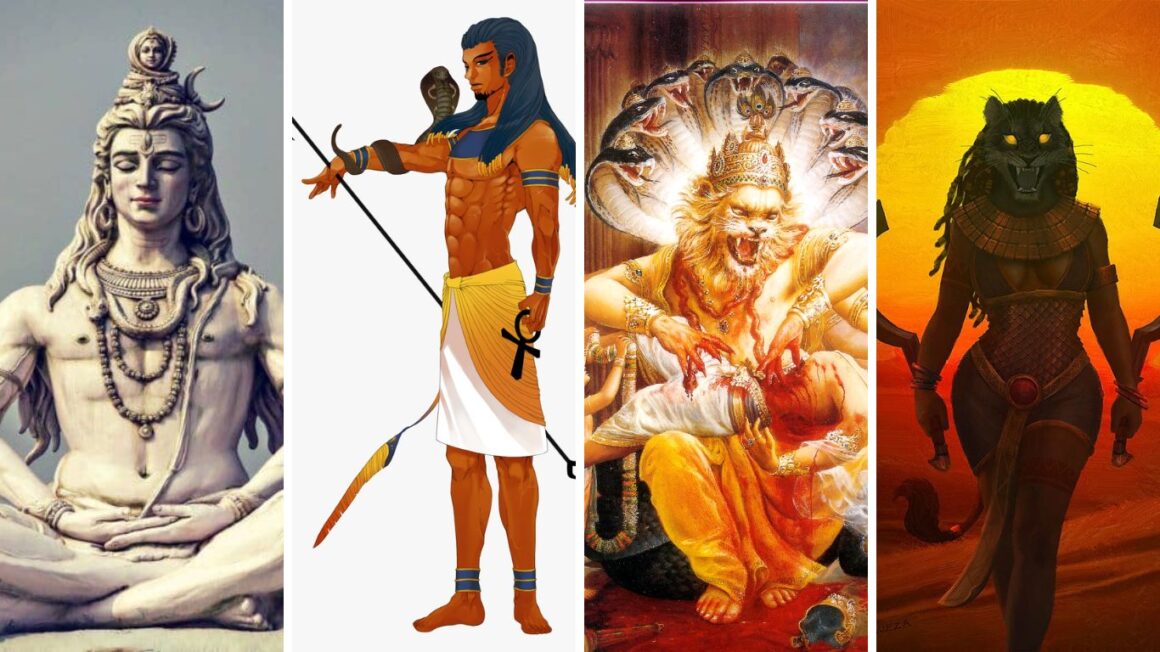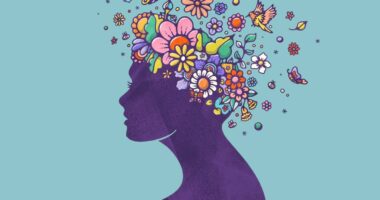There are Numerous and strong similarities between the Egyptian and Hindu gods. Some individuals like to assert that several faiths developed among prehistoric peoples, who initially practiced animism before moving on to polytheism and eventually monotheism. Zoroastrianism and Judaism are brought up in this context, but no one goes into great detail about their historical backgrounds.
The Vedic literature, the reference points for all theological issues, are where the many pantheons of gods can be found, and these connections can be traced back to them. Similar connections to the gods of Greece, Rome, and Norse mythology disprove the fallacious notion that religions emerged separately around the globe as prehistoric mankind sought to procreate and maintain population control.
Similarities Between Egyptian And Hindu Gods
Goddess Durga and Mut
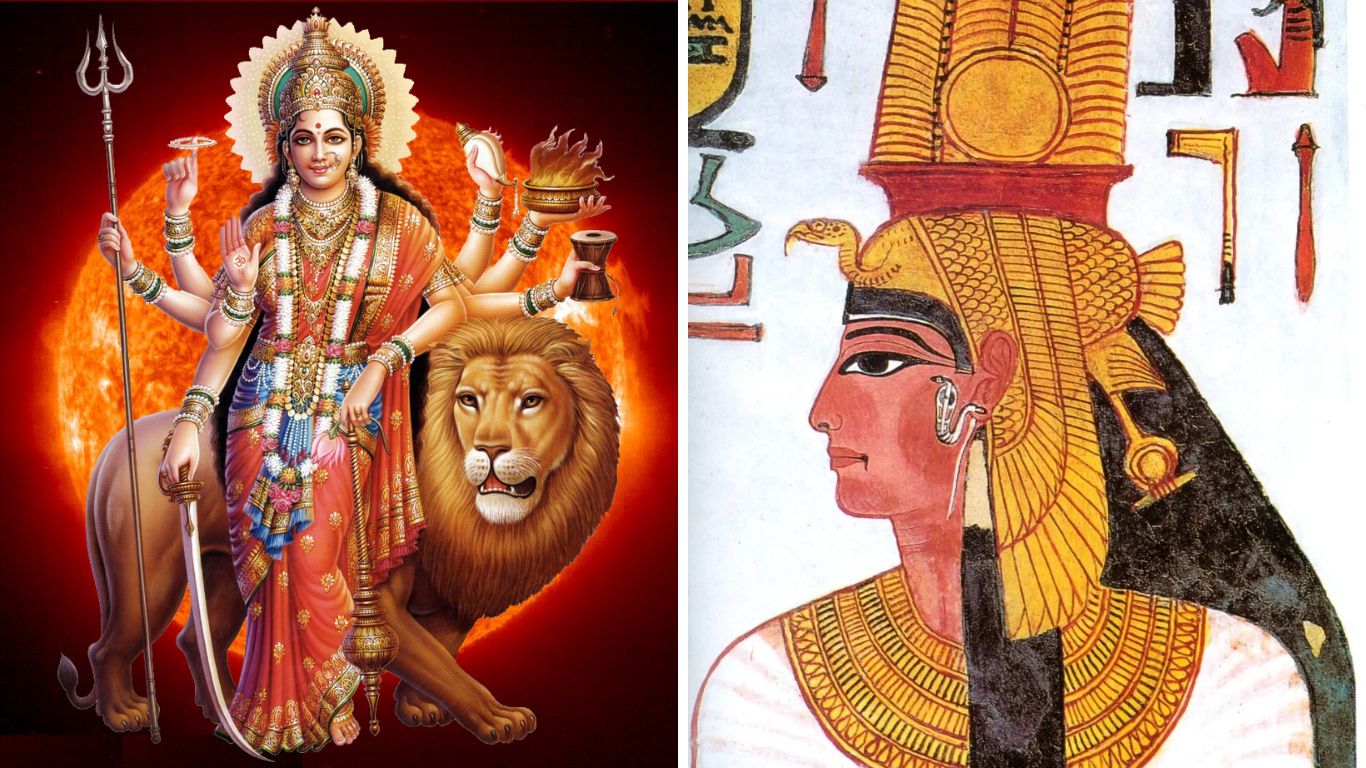
One Egyptian god that is similar to Goddess Durga is Mut. Both are powerful and fierce deities associated with protection and victory. Mut is the mother goddess of the sky and the cosmos, while Durga is the goddess of protection and victory in battle. Both are also seen as guardian deities who protect their followers from harm and danger. Mut is often depicted with a vulture headdress, symbolizing her role as a protector and nurturer, while Durga is often depicted with multiple arms and weapons, symbolizing her power and strength.
Goddess Saraswati and Seshat
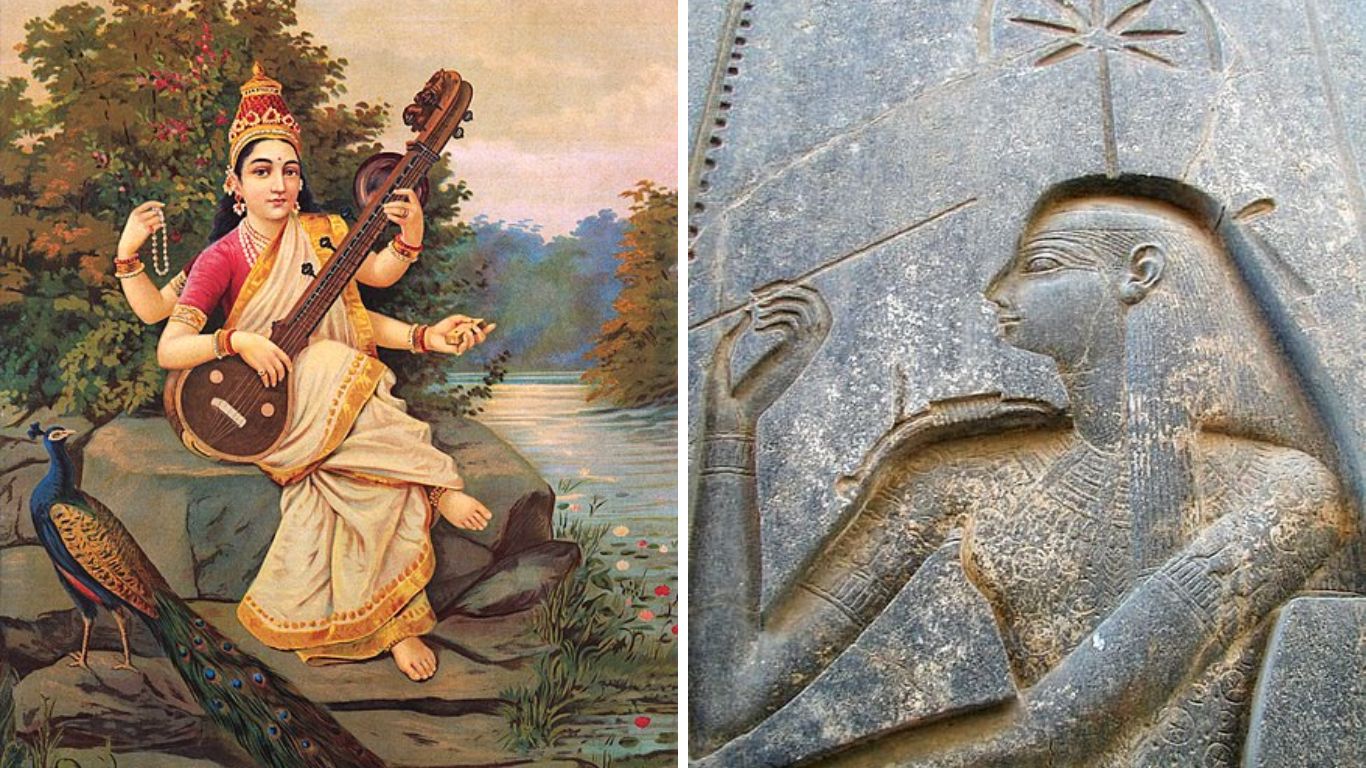
Seshat is an Egyptian goddess of writing, knowledge, and wisdom. She is often depicted holding a stylus and palette, representing her role as the patroness of scribes and record-keepers. Seshat is also associated with the stars and the measurement of time.
Goddess Saraswati is the Hindu goddess of knowledge, wisdom, music, and the arts. Like Seshat, she is associated with writing, education, and the pursuit of knowledge. She is often depicted with a veena (a stringed instrument) and a book, symbolizing her role as the patroness of the arts and learning.
Both Seshat and Saraswati are revered as deities of intellectual pursuits and are seen as sources of enlightenment and wisdom. They are also both associated with the written word and the transmission of knowledge through the written word.
Lord Indra and Seth / Shu
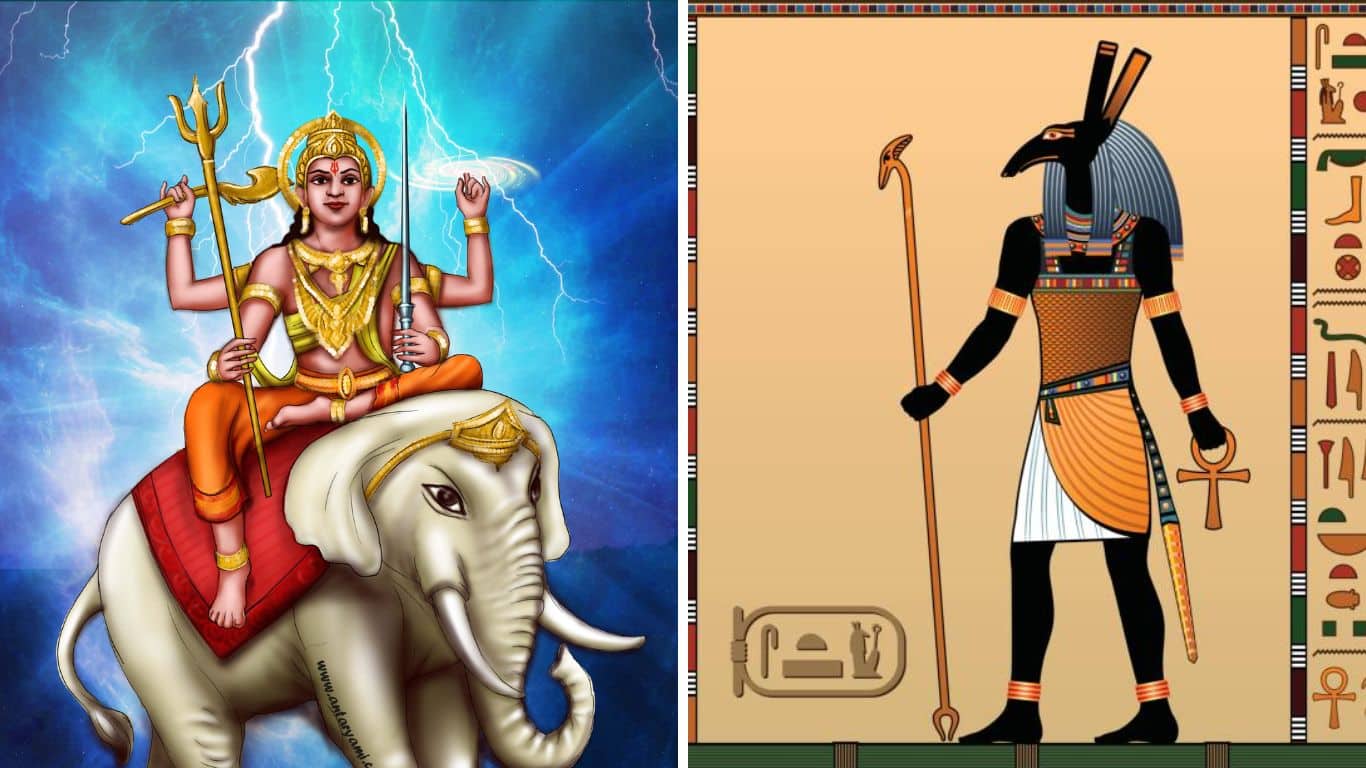
In ancient Egyptian mythology, there is no god that is directly equivalent to the Hindu deity Lord Indra. However, there are a few deities in the Egyptian pantheon that may have some similarities to Lord Indra.
One possible deity that could be seen as similar to Lord Indra is Set, also known as Seth. Set was the god of chaos, violence, and foreign lands in ancient Egyptian mythology. He was often depicted as a god of storms and was associated with the desert, which is a natural habitat for thunder and lightning. In this way, Set could be seen as similar to Lord Indra, who is also a god of storms and is often depicted as wielding a thunderbolt.
Another deity that may have some similarities to Lord Indra is Shu, the god of air and sunlight. Shu was one of the nine original deities in the Egyptian pantheon and was considered the son of Atum, the creator god. In some myths, Shu was associated with the heavens and was believed to hold up the sky. This could be seen as similar to Lord Indra, who is also associated with the heavens and is sometimes depicted as holding up the sky or supporting the weight of the world.
Balarama and Khonsu

Khonsu and Balarama are both deities associated with the moon and its phases. Khonsu is the Egyptian god of the moon, while Balarama is the brother of the Hindu god Krishna and is sometimes associated with the moon as well. Both deities are also associated with fertility, with Khonsu being the god of childbirth and Balarama being associated with the plowing and cultivation of crops. Additionally, both deities are seen as powerful and protective deities, with Khonsu being the god of protection and Balarama being a warrior god who fights to protect his followers.
Lord Brahma and Ptah
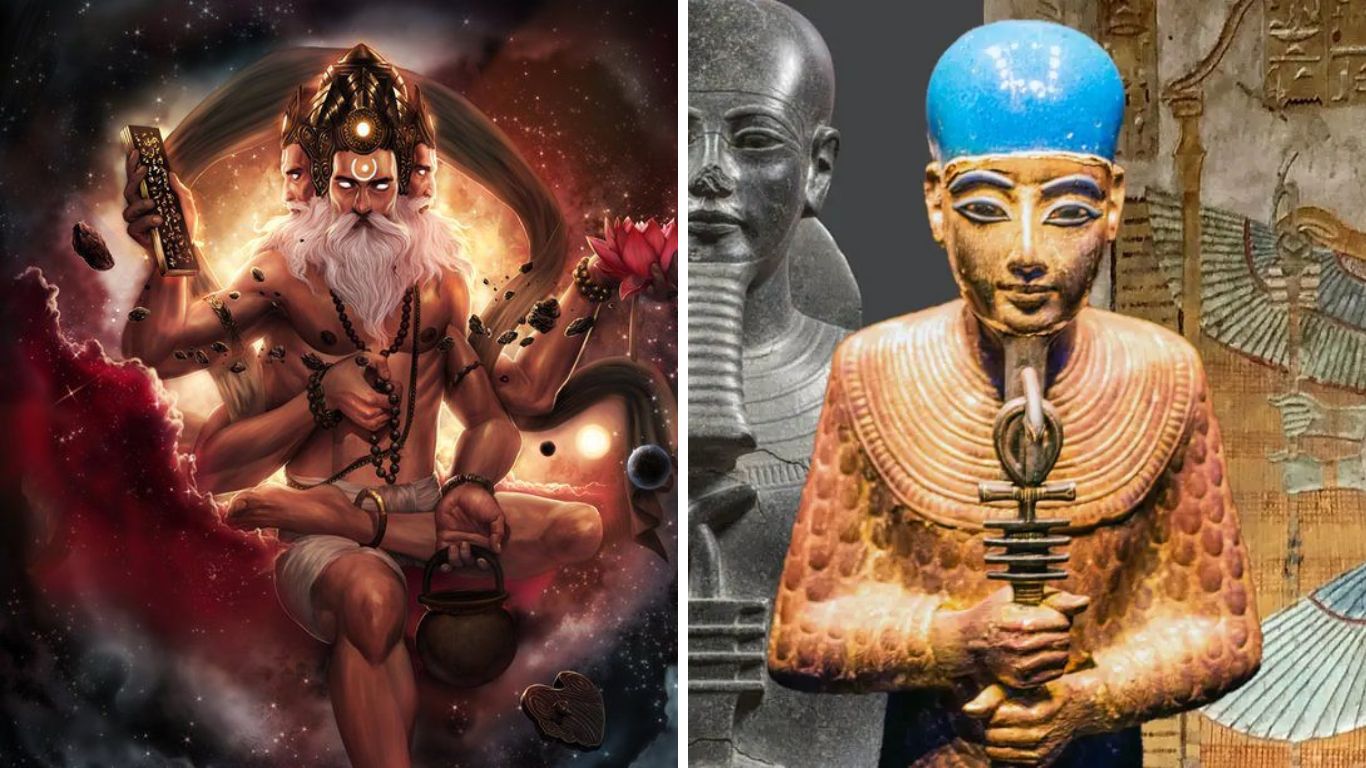
Ancient Egyptian texts refer to Brahma as the god Ptah, which is a transliteration of the Sanskrit word pitah, which means father. Brahma is referred to as the universe’s “Pitamah and “Pitah.” Ptah is frequently represented with a lotus flower. Additionally, Brahma is always shown on a lotus flower. He is the source of the universe and all life. He is the highest being in the material cosmos and the secondary creator. The symbolic structure features four horizontal lines that stand in for Brahma’s four heads.
Ptah is the Deity of Truth, the Supreme Judge, and the Master of Wisdom. All knowledge comes from the Vedas, which were created by Brahma. Like Brahma, who is likewise portrayed with a beard to signify his wisdom and understanding, Ptah is shown with a long beard. In the majority of sculptures, the Egyptian god Ptah is depicted as contemplating or meditating while seated on a lotus.
Narada and Hermes
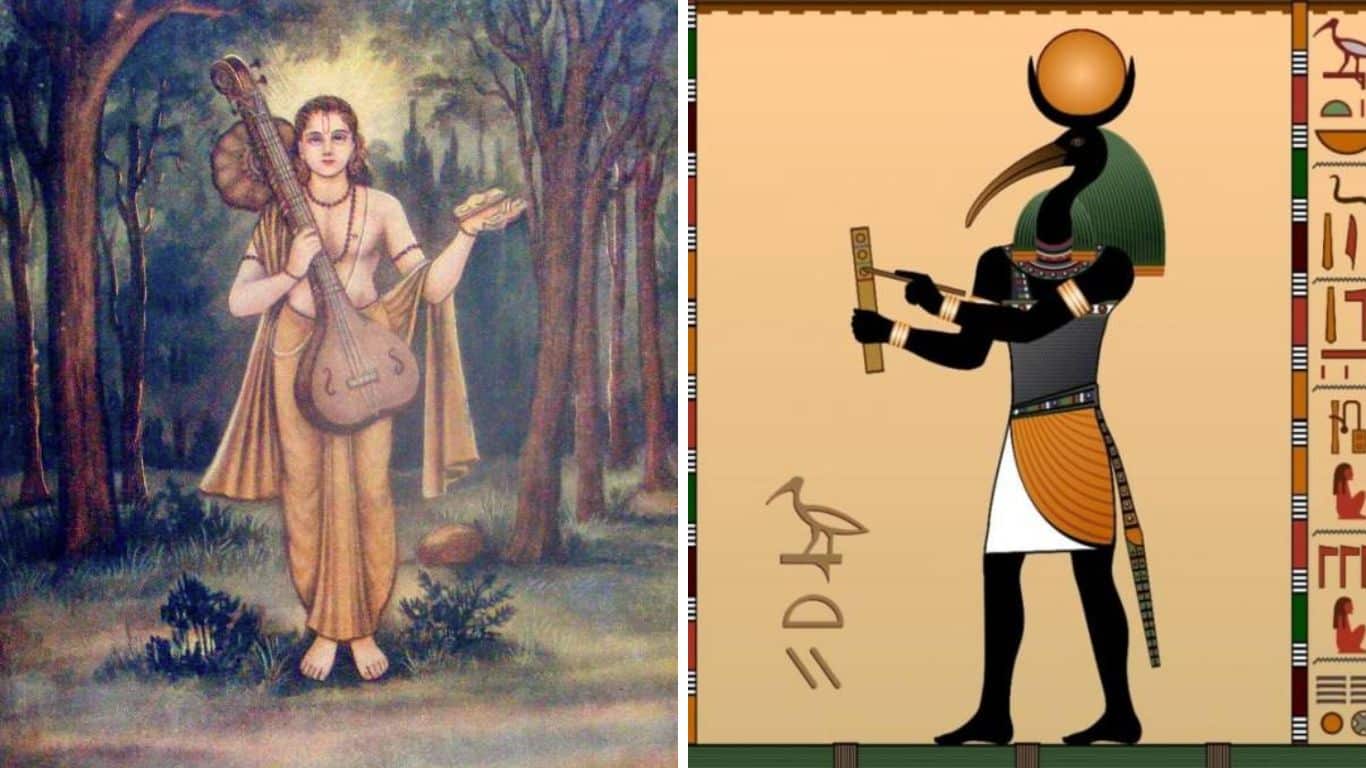
Both Hermes and Narada are messenger gods and are associated with communication and travel. Hermes is the Greek god of commerce, thieves, and travelers, while Narada is the Hindu god of communication, music, and storytelling. Both gods are also known for their quick wit and cunning, and are often depicted carrying a staff or caduceus, a symbol of their messenger role. Additionally, both Hermes and Narada are associated with cross-cultural exchange and bringing people and ideas together.
Lord Krishna and Amun
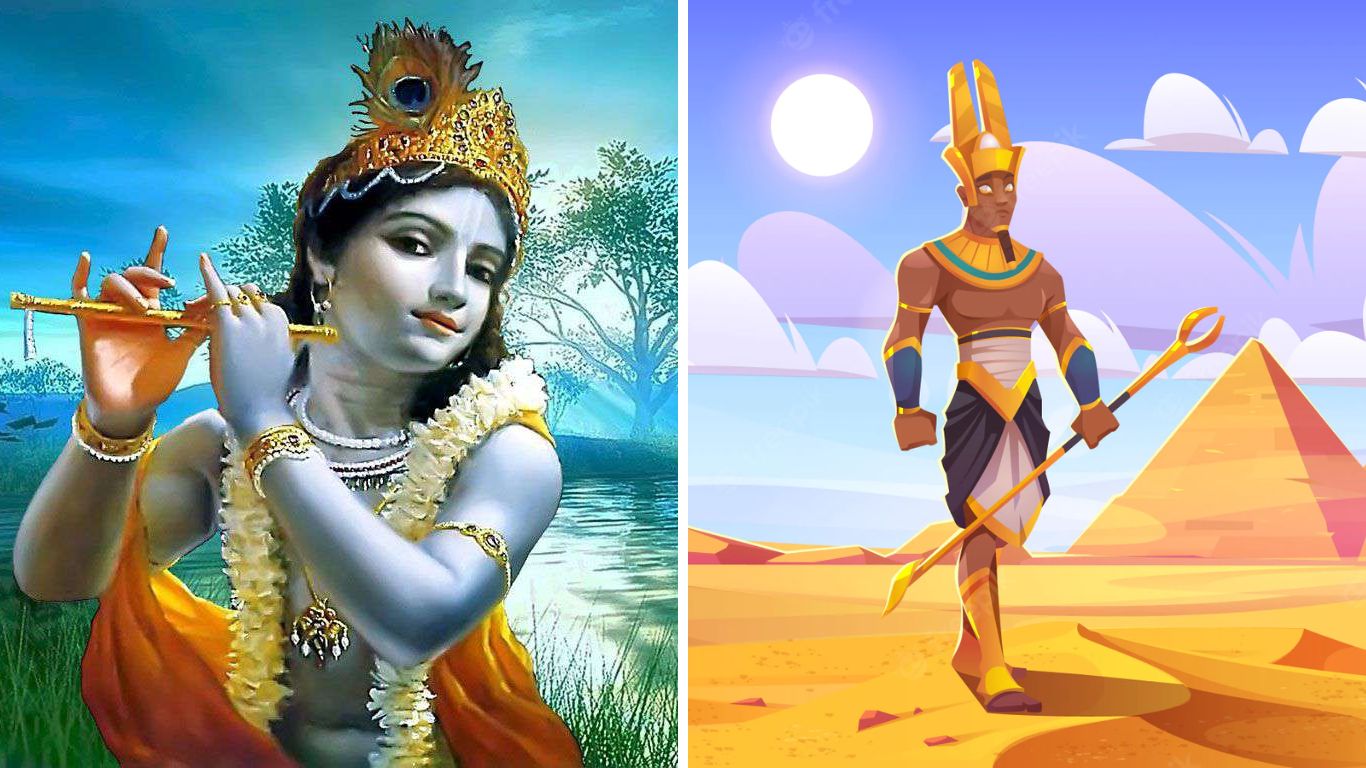
Ancient Greek historians in Libya and Nubia testified that Amun became adored inside Egypt as the principal deity of the Egyptian Empire. In inscriptions from the pyramids, Amun is frequently referred to as the primordial Lord and recognized as the creator and a symbol of creative energy.
Lord Amum is referred to as “Ymn” in Egyptian writing, which is pronounced “Yamunu” or “Yamun.” Thus, it is clear that the name is a mutated version of Yamuna, a river that has long been linked to Lord Krishna. As a result, Amum, also known as Yamun, literally means “The Lord of Yamuna, Krishna.”
Lord Shiva and Atum
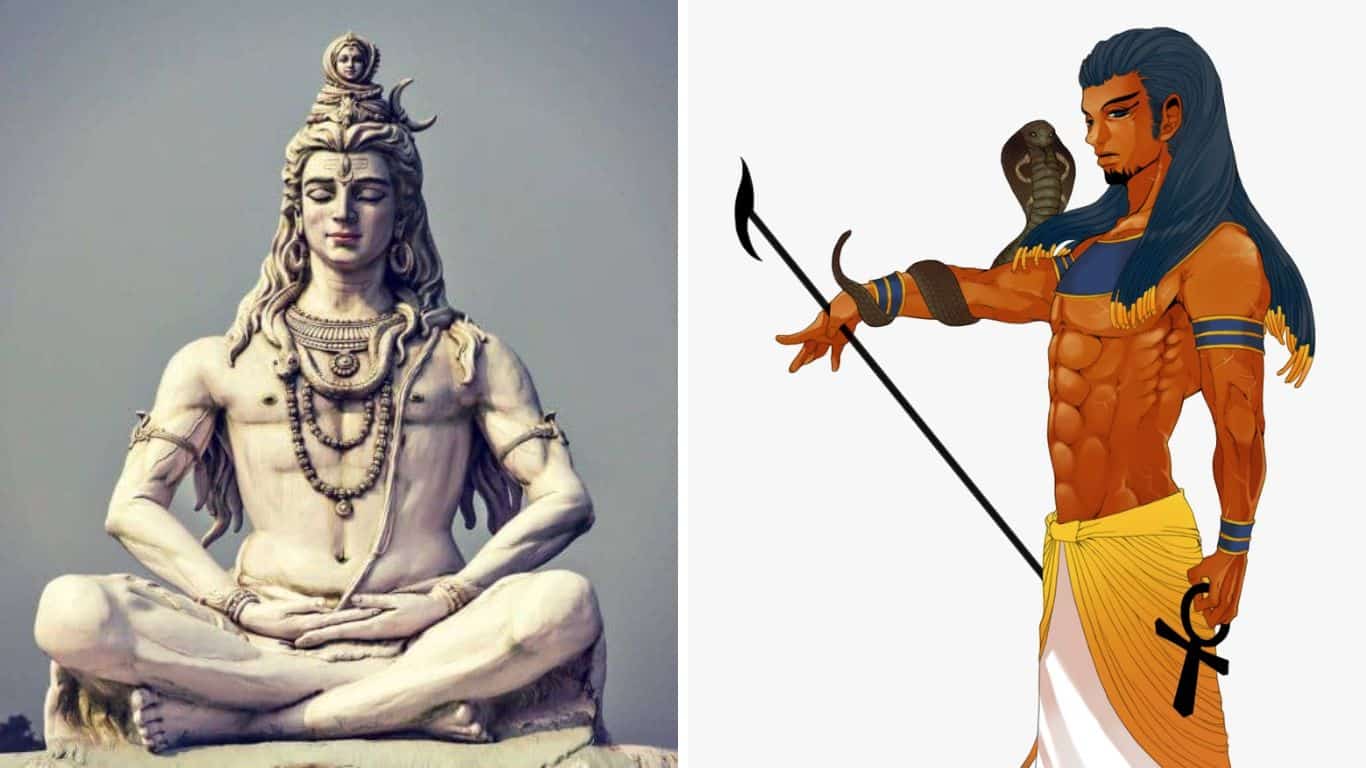
Shiva and atum are comparable in their qualities. Atum wields a stick with a human head carrying a disc on top of it. Shiva always has skull garlands on His trident and around His neck. He is another destruction demigod like Atum. Atum is compared to the evening sun setting. Re-tmu is the name for the setting sun. Atum is related to Lord Shiva since Shiva is the deity of Tamas and symbolizes the Tamas, which is the ‘dark and lowering’ state of ignorance.
A bull is used to symbolize Atum. Bull is Shiva’s animal steed. Atum is said to have emerged from turmoil. As is well known, Lord Brahma’s wrath gave birth to Shiva. Atum and Shiva are connected to Rebel bands and Bhuta-Ganas, respectively.
Lord Narsihma and Sekhmet

There are some similarities between the Egyptian god Sekhmet and the Hindu god Lord Narasimha. Both are associated with strength, power, and protection. Sekhmet is a fierce warrior goddess who protects her followers from harm and danger, while Lord Narasimha is a powerful avatar of Lord Vishnu who protects his devotees from evil. Both deities are also known for their ferocity and ability to defeat their enemies in battle. However, there are also some significant differences between the two deities. Sekhmet is a female deity, while Lord Narasimha is male. Additionally, Sekhmet is associated with the sun and fire, while Lord Narasimha is associated with the moon and water.
Also Read: Importance of Rudraksha in Hindu Mythology
